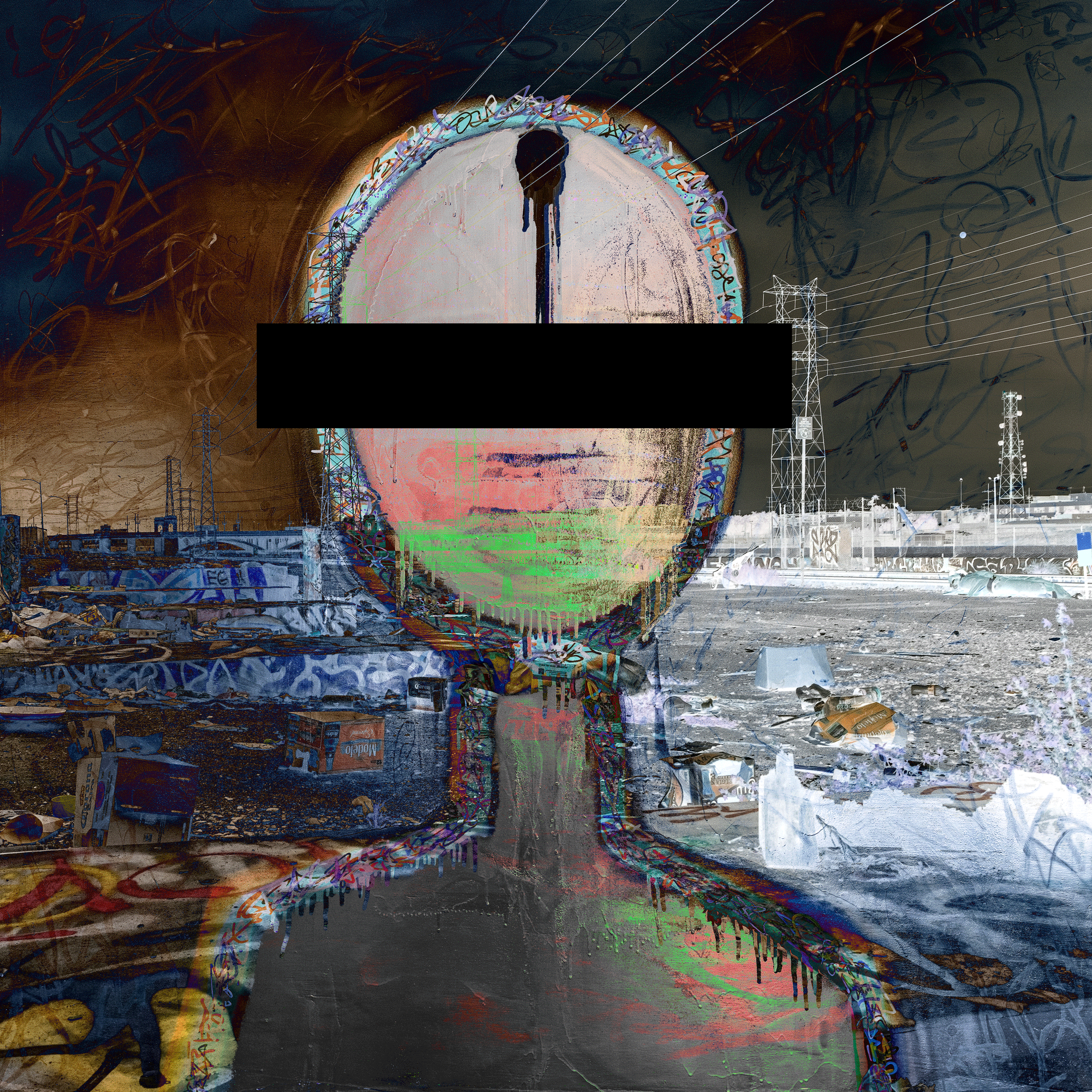IMN #25 — Patrick Amadon

It's Monday Night #25
Let’s share thoughts about @patrickamadon’s work.
Contrary to what one might think, @patrickamadon's art is not iconoclastic. Why not? Because it doesn't aim at the destruction of images, but of the eye itself.
But let me elaborate.
The aesthetic category used to describe @patrickamadon's art is glitch. I'm not telling you anything new.
In every way, glitch art is an aesthetic aberration, which defies the canonical criteria for judging works of art.
In the tradition of Western pictorial art, what has most often been valued are qualities of harmony, stillness, apparent perfection and perfect appearance.
The use of digital technologies has rather accentuated this trend, which XXth century arthad largely contested: the image - as a set of pixels - is manipulated a posteriori (contrasts, colour adjustments, luminosity, etc.) to be "improved", i.e. to erase human work's traces.
The conception of the underlying image is that of an idol, in the theological sense: a divinised figure, devoid of any defect.
But in order to achieve this fetishization, it was necessary to kill the image: to smooth it, to freeze it and to conceal everything that indicates a material production process, disrupted by all kinds of accidents, full of imperfections. Sanitized image.
Glitch art, to put it quickly, makes a double reversal. On the one hand, it brings to the forefront everything that the idolatrous conception of the image repressed: the trembling, the shivering, the sensitive fragility of the image.
But on the other hand, this failure of the image is not so much the work of the hand as a premeditated or unplanned bug. Glitch art is based on the visual exploration of bugs caused by the corruption of a code or a database, or even by a clever manipulation of software.
Back to @patrickamadon's art. In his work, image seems to be reduced to a waste product, the residue of a set of aggressive deterioration procedures; a mixture, a brutal superimposition of heterogeneous visual fragments; a raw palimpsest that transforms signs into combustibles.
Image is violently returned to what it is: a medium, an operation on the visible. Images in @patrickamadon's work are neither imitations nor illustrations. On the contrary, he undoes and even deconstructs the relationship of resemblance that we usually preach to images.
Technically, for @patrickamadon, an image is nothing but a system of deformation: by chromatic saturation, sizzling or trembling contours, by undulating lines and exploding blocks.
From one work to the next, @patrickamadon is inventing before our eyes a new visual grammar, a language whose syntactic rules and linguistic principles are still unstable and yet affirmed with great intensity.
Each work orchestrates an impossible encounter between schematic elements, figurative aspects, shapeless spurts of color and a-geometric striations. The whole thing is both animated and looped.
The first thing that interests me is the work that @patrickamadon does on the framing of his pieces. By definition, for a digital piece, we don't talk about frame (as in painting) but about size, about dimensions which translates into a surface occupied on a computer screen.
Now, even though @patrickamadon's pieces are not framed in the classical sense, they seem to me to bite or overflow on their frame. By this I mean that they do not occupy a square and clearly delimited space on the screen, they contain a movement that cannot be circumscribed.
If, in fact, I know that the features of the work do not leave an imaginary frame, the work is, from a phenomenological point of view, unframed, it skids and drools outside its own borders.
The art of the XXth century was extremely aggressive with the images (in the sense of the beautiful idol): caricature, fragmentation, crumbling, disfiguration, etc.
It replaced the fetish by a work on the quotation, the collage and the geometrization of the sensitive world (by a pointillism, for example, or by an anti-perspectivist representation of the third dimension).
In @patrickamadon's work, the image is neither an icon to love nor an idol to destroy. It is a modulable frequency.
It is a frequency that he brings to its highest intensity, until reaching the rupture, a break that splits the perception and through which monsters spring up a frequency, i.e. a more or less large number of cycles of variations per second.
Image becomes for @patrickamadon a pure quantity of digitally determined sensitive variations.
Pixels are destructured; artificial and out of place colors appear; banal photography that has become unrecognizable: the glitch is an anarchic twist of the image; anarchic and yet algorithmically organized.
But image, in @patrickamadon's work, is not an enemy. It's only a pretext or a vehicle to assault the eye that looks at it. It subjects the eye to a high intensity electric current. If I were to organize an exhibition of his work one day, I'd call it "the electrocuted eye".
He deliberately treats the retina as a printing surface and plays with retinal persistence by stimulating the phenomenon in a way that is both ferocious and contradictory.
The more or less explicit references to street art, to hacking, to culture itself, are only decoys to hide the fact that the animation, precisely, does not show anything, except for an eye that is electrocuted by what it sees.
The disonnance, the anomaly (which contains the standard of which it is the exception) are set up in aesthetic principle: this vibration or this tremor of the eye under the effect of a high frequency restructure the image without the least illusionism.
What acts on us are flows, rhythms, a power of erasure and rewriting that crosses each of @patrickamadon's pieces and shakes us like an electrocution.